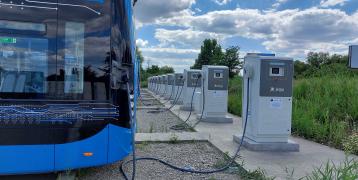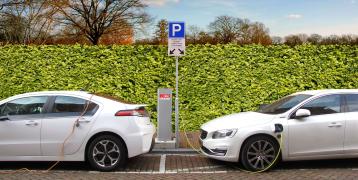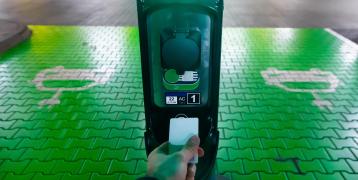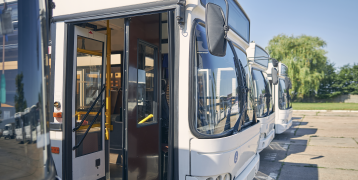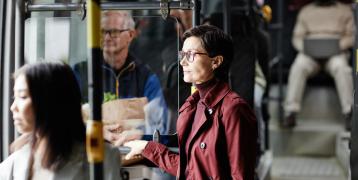Expanding E-Mobility at the regional level: key learnings
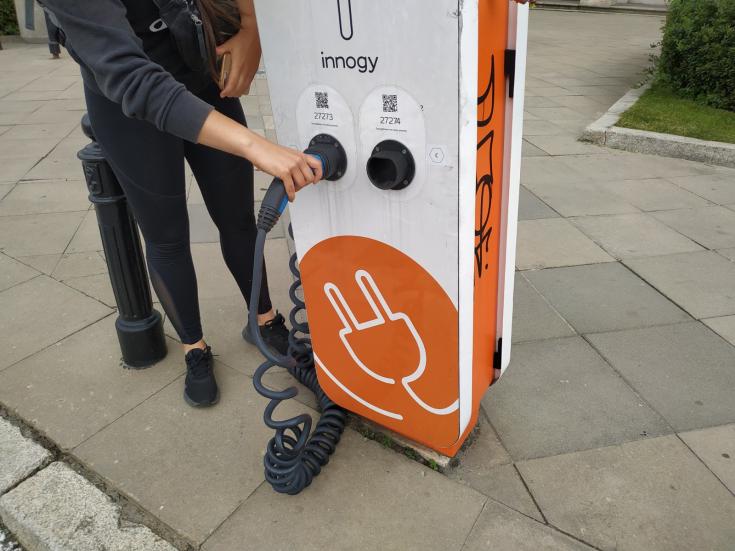
On 10 April 2025, the Interreg Europe Policy Learning Platform held an e-workshop on the topic of Expanding E-Mobility at the Regional Level, exploring good practices from Hungary, Ireland, the Netherlands, Portugal, Slovenia and Sweden.
The transition to e-mobility faces significant challenges, including the rollout of charging networks and uptake of electric vehicles.
Overcoming these challenges requires co-ordinated efforts between governments, technology providers, and energy providers to develop sustainable policies, incentives, and education campaigns that promote e-mobility.
As such, the eWorkshop showcased how regional and local authorities across EU are supporting the expansion of e-mobility in their territory, with an emphasis on charging infrastructure and EV introduction.
Watch the recording
Workshop agenda
00:00:59 - Introduction by Katharina Krell and Simon Hunkin
00:10:07- Getting to know each other, interactive session with the participants
00:15:53 - Presentation on public electric vehicles Charging Network Development by Giuliano Mingardo from the Erasmus University of Rotterdam - ZCI project
00:28:33 - Question on the examples of policies that stimulate behaviour change towards the use of electric vehicles.
00:31:01 - Presentation of Stockholm's annual report on electric vehicle charging by Paul Fenton from the City of Stockholm
00:45:07 - Question on whether Stockholm has a public visualization tool
00:46:52 - Presentation on E-charging infrastructure project in Municipality of Kranj by Blanka Odlazek from the Regional Development Agency of Gorenjska
01:04:12 - Questions on the Agency's next steps regarding this project
01:06:50 - Questions to the audience on the main barriers encountered for rolling out infrastructure in their territories
01:38:38 - Interactive session with the audience on questions related to e-vehicles and charging stations
01:48:45 - Introduction by Katharina Krell of the second session on selection, procurement and deployment of e-vehicles
01:50:37 - Presentation on the Cost of ownership for electric vehicles by Dr. Darren McAdam-O'Connell from Cork Transport & Mobility Forum
02:02:47 - Question on incentives in tender to promote lighter electric vehicles
02:06:35 - Question on the legislative changes necessary to foster the use of light electric vehicles
02:09:18 - Presentation on cross-border e-buses between Hungary and Slovakia by Vilmos Oszter from the Hungarian Institute for Transport Sciences and Logistics
02:25:55 - Question on the procurement process with the specific cross-border context
02:31:14 - Presentation on the status of e-mobility and procurement experiences in the Azores by Joana Rita from Azores Regional Directorate for Energy
02:43:21 - Question on the strategy and perspectives for the Government of Azores
02:47:30 - Interactive session with the audience on public fleets and public acceptability of e-vehicles among the population
03:12:30 - Conclusions and final remarks by the speakers
Key learnings
Background
E-mobility plays a key role in decarbonising the economy. When powered by renewable energy, it reduces greenhouse gas emissions from the transport sector, helps cut dependence on fossil fuels and improves air quality. When participants were asked to outline what they consider the key benefits of emobility for their regions, they identified sustainability, reduced CO2 emissions, clean air and less noise pollution as the most important drivers of the transition.
The EU has ambitious targets, aiming for at least 30 million zero-emission vehicles by 2030, as outlined in the Sustainable and Smart Mobility Strategy (2020), and mandates a 100% reduction in CO₂ emissions from new cars and vans by 2035. These targets are supported by the Alternative Fuels Infrastructure Regulation and the Fit for 55 Package.
Public authorities are critical in enabling this transition by setting policies, investing in infrastructure, and leading by example with the electrification of public fleets. They also shape market conditions through procurement, regulation, and incentives that encourage private adoption.
Policy & Planning for E-Mobility Charging Infrastructures
A well-distributed charging network helps to reduce range anxiety and enables the widespread adoption of EVs across different regions. However, deployment faces several key challenges, including high upfront investment costs, uneven geographic distribution, especially in rural areas, and grid capacity limitations. It is a complex puzzle which involves multiple stakeholders, from utilities and city planners to technology providers and policymakers.
Participants were asked to identify the main barriers to the roll-out of infrastructure and they primarily focused on the high cost of installation and lack of access to finance. Participants also highlighted a lack of political will in many regions as a key hindrance.
EU policy shows the direction of travel towards emobility. All regions need to invest in charging infrastructure and should be considering a full e-mobility strategy within their SUMPs. Political will is essential, leading to a strong policy framework and thorough planning for individual projects – this strategic approach is far superior to ad hoc action.
Data is essential for roll-out of infrastructure, both for ensuring the right locations for chargers but also for determining the impact on the grid. Charging operators should be required to provide data as part of the permitting process for future planning.
Speakers also identified the need to have a plurality of operators for charging infrastructure, to avoid dependence on a single supplier, enabling competition.
Infrastructure rollout cannot be considered in isolation but in the framework of the wider regional energy and mobility strategies. As well as considering the impact on the grid, regions must also consider the availability of renewable energy and energy storage options
Parking policies are also important for emobility, with parking space allocated alongside charging infrastructure. Some regions may choose to give priority parking to evehicles to help encourage the transition but the long-term scalability needs to be considered as more evehicles are used.
The grid is already acting as a constraint for emobility uptake in many regions. A mixture of measures is required to overcome it including encouraging nighttime charging (for example, for vehicle fleets), as well as using smart charging. Batter storage can also be an option as grid expansion is expensive.
Selection, Procurement and Deployment of E-Vehicles
Cars, trucks, buses and bikes, amongst others, can be electrified. Many regions have focused on measures for electric cars, but lighter and smaller electric vehicles should also be incentivised – they can enable sustainable mobility, while taking less space and reducing congestion. E-vehicle sharing systems can also be used to minimise congestion, providing access to mobility only when needed.
Electric vehicles have higher upfront costs than traditional vehicles but have a lower cost over their lifetime with lower operational and service expenditure. This was deemed by participants as one of the most beneficial aspects of e-vehicles and core to communicating about them
In urban areas, emobility has particularly high potential as most urban journeys are short distance, meaning that range anxiety is less of a concern. The same is true of islands, such as the Azores, where emobility is being prioritised.
Many participating regions were particularly interested in ebuses, though there was concern about their operation in rural areas and long-range routes. Participants also noted challenges in procuring buses with few vehicle providers and long waiting lists.
Joint procurement of electric vehicles for smaller municipalities by a central procurement entity is a good approach by enabling bulk purchasing to bring down costs, pooling technical and administrative expertise into a single body so multiple municipalities can benefit and facilitating joint project and grant preparation.
Evehicles have a role to play in grid stabilisation through Vehicle-to-Grid technologies whereby they can charge from the grid but also feed electricity back in when needed, turning EVs into mobile energy storage to balance supply and demand on the grid.
Public opinion is already changing in reaction to electric vehicles, as uptake continues to rise and doubts about their performance diminishes. But further efforts are needed to encourage uptake and overcome the perception that e-vehicles are an elite thing.
The developing market for second-hand evehicles will be important in the transition. Many vehicle users only use them for short distance journeys, and second-hand cars and batteries with reduced range, can be cost effective introduction.


